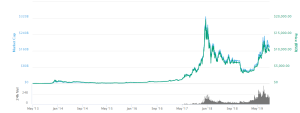Forex and Bitcoin Trading: A Comprehensive Guide
Unlock the secrets of Forex and Bitcoin trading! Learn winning strategies, manage risk effectively, and understand the key differences between these volatile markets. Start your journey to financial success today!
The worlds of forex and Bitcoin trading are notoriously volatile, presenting both immense opportunities and significant risks. Understanding the intricacies of each market is crucial before investing. This comprehensive guide explores the key aspects of both, offering insights into trading strategies, risk management, and the fundamental differences between these two distinct asset classes. Successful navigation requires diligent research, careful planning, and a realistic understanding of potential losses.
Understanding the Forex Market
The foreign exchange market, or forex, is the largest and most liquid financial market globally. It involves the trading of currencies in pairs, such as EUR/USD (Euro/US Dollar) or GBP/JPY (British Pound/Japanese Yen). Unlike traditional stock markets with set opening and closing times, forex operates 24 hours a day, five days a week, across various global financial centers. This constant liquidity offers traders numerous opportunities, but also necessitates constant vigilance.
Forex Trading Strategies
Several strategies exist for forex trading, each with its own risk profile and potential rewards. Scalping, for example, involves profiting from small price movements within short timeframes. Swing trading, on the other hand, focuses on holding positions for several days or weeks, capitalizing on larger trends. Day trading, a popular approach, involves opening and closing positions within a single trading day. The choice of strategy depends heavily on individual risk tolerance, trading experience, and time commitment.
- Scalping: High frequency, low profit per trade, requires intense focus.
- Swing Trading: Moderate frequency, moderate profit potential, requires patience.
- Day Trading: Moderate to high frequency, variable profit potential, demands discipline.
- Position Trading: Low frequency, high profit potential, requires long-term perspective.
Risk Management in Forex
Effective risk management is paramount in forex trading. Using stop-loss orders to limit potential losses is crucial. Diversification across multiple currency pairs can reduce exposure to significant losses from a single trade. Furthermore, careful position sizing, ensuring that no single trade represents a substantial portion of your trading capital, is essential to longevity in the market.
Understanding leverage, the ability to control larger positions with smaller amounts of capital, is vital. While leverage can amplify profits, it also dramatically magnifies losses. Responsible leverage management is non-negotiable for successful forex trading. Regularly reviewing your trading journal and adapting your strategy based on performance is also a key aspect of successful risk management.
Understanding the Bitcoin Market
Bitcoin, the world’s first cryptocurrency, operates independently of traditional financial institutions. Its decentralized nature, secured by blockchain technology, distinguishes it from fiat currencies. Bitcoin’s price is highly volatile, subject to significant fluctuations influenced by news events, regulatory changes, and market sentiment. This volatility creates both lucrative opportunities and substantial risks for traders.
Bitcoin Trading Strategies
Bitcoin trading strategies often involve analyzing market trends, technical indicators, and news events to predict price movements. Technical analysis, using charts and indicators, is widely employed to identify potential entry and exit points. Fundamental analysis, focusing on underlying factors impacting Bitcoin’s value, such as adoption rates and regulatory developments, plays a significant role in long-term investment strategies. Short-term trading, aiming to profit from rapid price swings, requires significant experience and risk tolerance.
Risk Management in Bitcoin
Risk management in Bitcoin trading is even more critical given the asset’s volatility. Diversification, though challenging in the crypto space, can be achieved by investing in other cryptocurrencies or traditional assets. Using stop-loss orders is crucial to limit potential losses, particularly during periods of high market volatility. Understanding the security implications of storing Bitcoin, whether through exchanges or personal wallets, is paramount to protect your investment.
The decentralized and unregulated nature of Bitcoin presents unique challenges. Scams and fraudulent activities are prevalent, underscoring the need for thorough due diligence when selecting exchanges and trading platforms. Keeping abreast of evolving regulations impacting cryptocurrencies is vital, as legal frameworks are still evolving globally.
Comparing Forex and Bitcoin
While both forex and Bitcoin offer opportunities for profit, they differ significantly. Forex is a regulated market with established trading practices and regulatory oversight. Bitcoin, on the other hand, operates in a largely unregulated environment with inherent volatility. Forex trades currencies backed by governments, while Bitcoin’s value is driven by market forces and technological advancements.
- Regulation: Forex is heavily regulated; Bitcoin is largely unregulated.
- Volatility: Both are volatile, but Bitcoin exhibits significantly higher volatility.
- Liquidity: Forex boasts extremely high liquidity; Bitcoin’s liquidity, while substantial, is less than forex.
- Accessibility: Both are accessible globally, but Bitcoin’s accessibility can be impacted by regulatory changes in individual jurisdictions.
Choosing Your Path
The choice between forex and Bitcoin trading depends heavily on individual risk tolerance, financial goals, and trading experience. Forex offers a more established and regulated environment, but with potentially lower profit margins. Bitcoin offers the potential for higher returns but with significantly higher risk. Thorough research, careful planning, and continuous learning are essential for success in either market.
Before engaging in any trading activity, it’s crucial to understand the potential risks involved. Never invest more than you can afford to lose. Consider seeking advice from qualified financial professionals before making any investment decisions. Successful trading requires discipline, patience, and a well-defined risk management strategy. Continuously educating yourself on market trends and trading strategies is critical to long-term success.
Thorough understanding of technical and fundamental analysis techniques is vital for both Forex and Bitcoin markets; Remember that past performance is not indicative of future results. The markets are dynamic and unpredictable; adaptability is key. Moreover, staying updated on market news and regulatory changes is crucial for making informed decisions and mitigating potential risks. The ability to analyze market data and interpret trends is a cornerstone of successful trading in both these areas.
Finally, remember that trading is a marathon, not a sprint. Consistent effort, continuous learning, and disciplined risk management are the cornerstones of long-term success. Avoid impulsive decisions driven by emotions. Focus on developing a robust trading plan that aligns with your risk tolerance and financial goals. Success in both Forex and Bitcoin requires patience, perseverance, and a commitment to continuous improvement.







